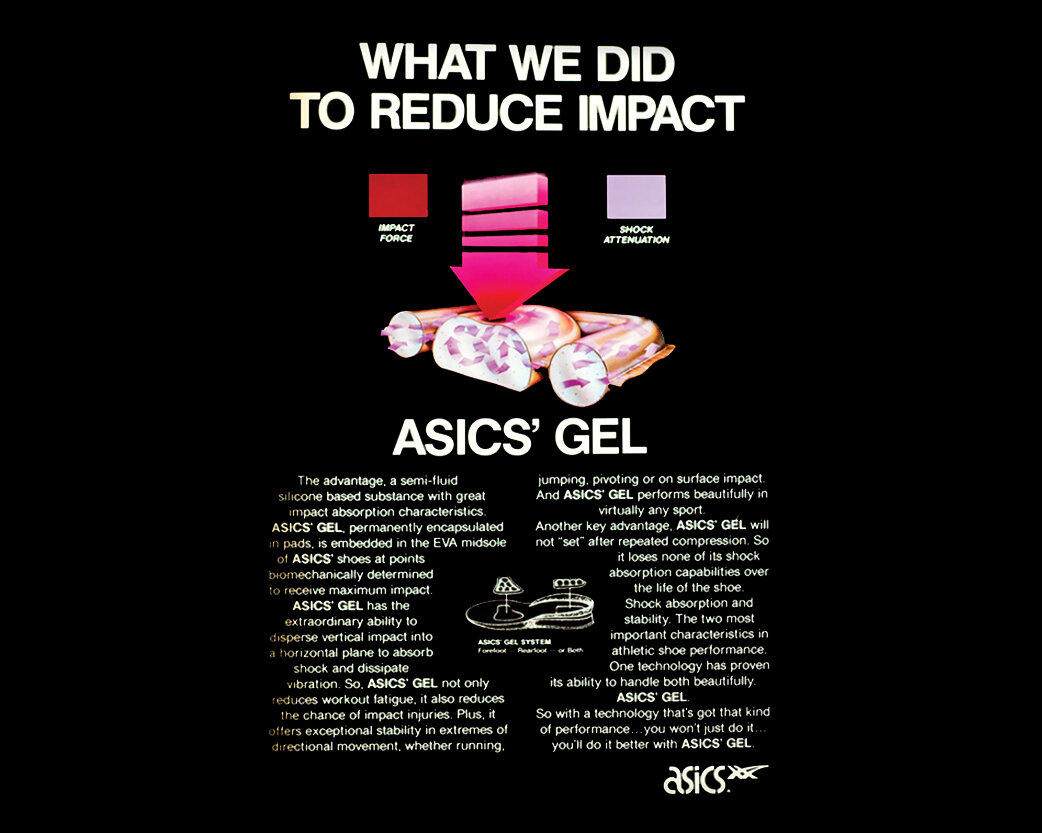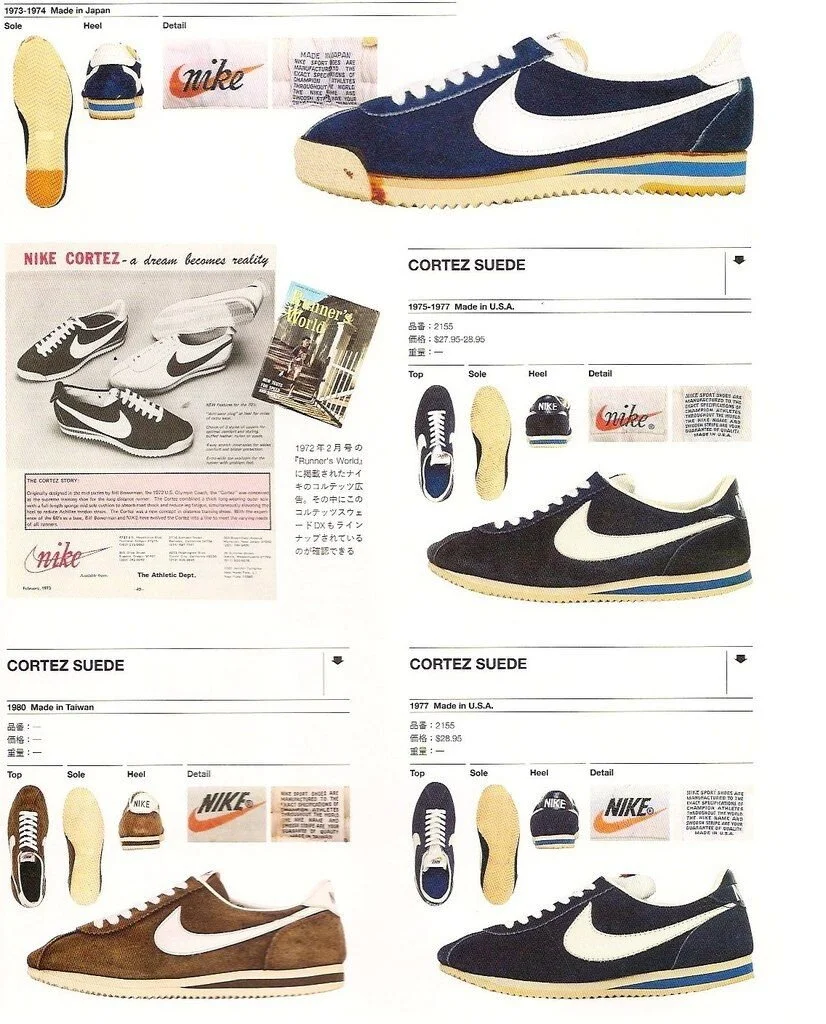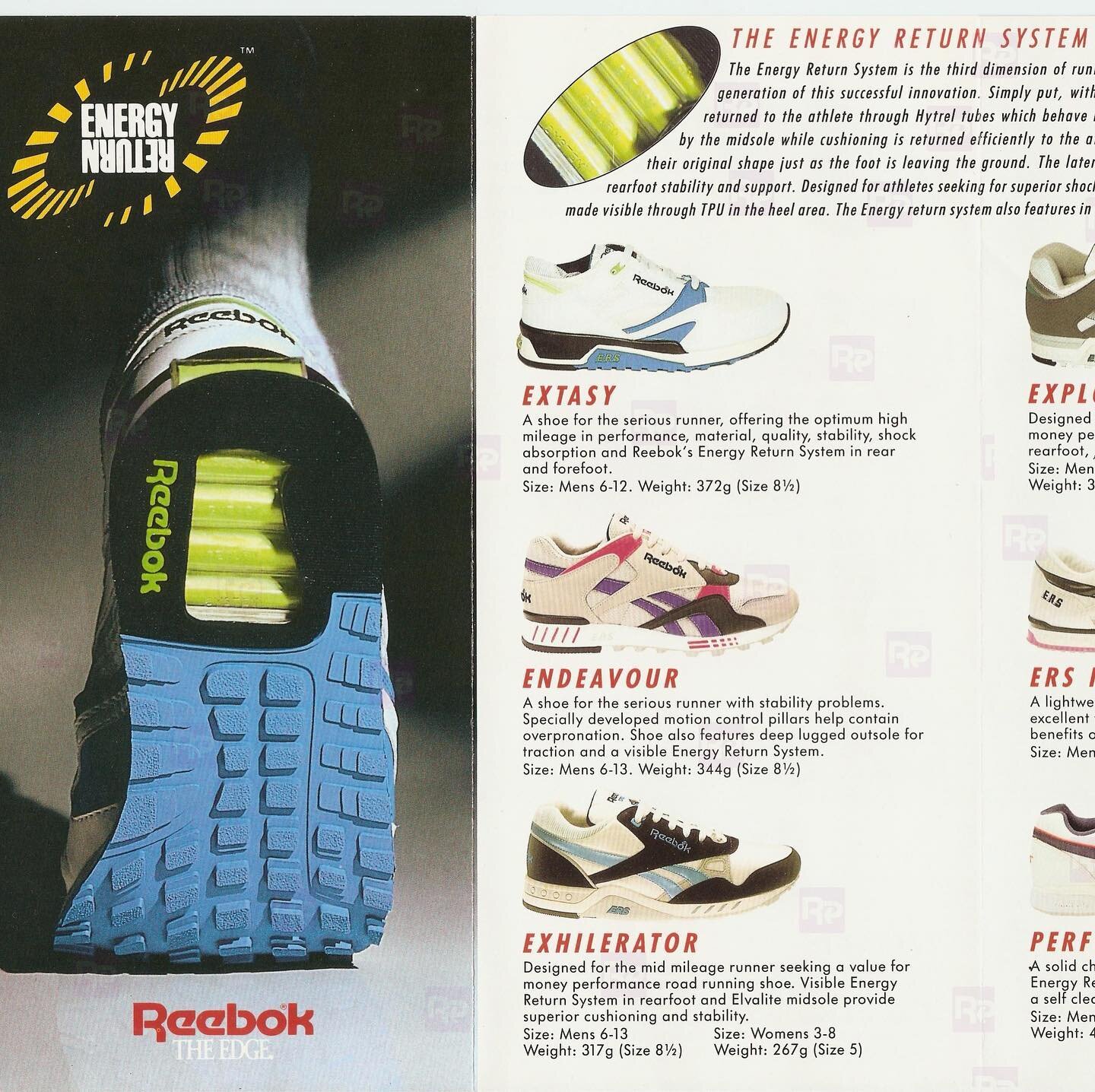Sole Systems 002: Midsole
Evolution of Cushioning
(1970 - 2000)
Words by Rob Hallett
In the second instalment of our Sole Systems series, we take a look at the journey of the midsole from its initial conception through to the application and development of EVA-based compounds and the cushioning race that followed. The design of the midsole provides comfort, prevents injury and enables the user to channel their momentum in the most efficient way.
The Invention of the Midsole
Until the early ‘70s, cushioning in footwear didn’t really exist. The dependable materials of leather, rubber and cork had been used over and again with very little drive for innovation. The Chuck Taylor had gone through few updates since its 1917 inception, with the same thin rubber sole intended for the sprung floors of indoor basketball courts. As is often the case today, it was in sports that the need for improvement arose as canvas sock-like uppers on hard rubber were not quite cutting it for the top athletes of the time. Early training shoe iterations from New Balance and Onitsuka Tiger became the go-to option for many runners, with more substance in the heel and a newly-named section called a ‘midsole’.
Fig. 1 Onitsuka Tiger
Wedge-shaped Cushioning
The Cortez is notorious for being the last shoe Bill Bowerman developed before Nike’s breakaway from distributing Onitsuka product, but behind all the furore of a multi-brand ownership battle lay a central piece of information that would change the course of footwear history; runners wanted cushioning. The extra wedge-shaped rubber midsole was a quiet-yet-key feature of the original design and was paramount to the shoe becoming a best-selling product for two different companies. Despite the growth of these brands and the increasing commerciality within the sports industries, a whole new material was needed to provide the catalyst for development - the age of rubber was over. It was the desire from Marty Liquori – then youngest person ever to compete in an Olympics 1500m final – to have more rebound and shock absorption that led to Brooks obtaining a sample of EVA from the Monarch Rubber Company in Baltimore. The Brooks Villanova was the first shoe to incorporate this EVA sole for the markets in 1975, a seminal move that gave the brand exclusive rights to the material for a year and kickstarted the modern era of running footwear.
Fig. 2 Nike Cortez
Ethylene-vinyl Acetate
EVA (ethylene-vinyl acetate) is from the class of elastic polymers, a group of rubber-like materials that at a chemical level are made up of long molecules arranged in a chain-like formation. These molecules can undergo considerable compression and stretch before being able to elastically revert to their original position, allowing for a high level of energy to be absorbed as well as being returned. In addition to having waterproof properties and being resistant to stress, EVA can be glossy, matte, clear or easily dyed and is therefore practical for the visual design of footwear as well. Midsoles were originally cut from sheets of uniform thickness EVA that provided a ‘matte sliced’ appearance from the side profile. As technology progressed, purpose-built EVA that was especially energy absorbent was created using a chemical foaming process where gas bubbles are pressure-trapped within the molecular makeup of the material. The outcome has properties similar to rubber, only softer, lighter and able to provide a whole lot more bounce. It is no wonder that the compound was picked up by footwear companies across the globe and remains one of the most widely used cushioning materials over forty-five years later.
Fig. 3 Brooks Villanova
Compression Set
It soon became apparent that the main drawback to the composite was its compression set, the amount whereby the material gradually thins over time with repeated excessive compression. This is a non-issue with hard-rubber soles but is a property of interest in elastomers to measure their permanent deformation with use. The result of this compression - added to corrosion from the floor – is a thinner sole as the microscopic bubbles within the material flatten over time, occasionally bursting completely. Occurring unevenly over the surface of the foot as the pressure differs, this leads to an increased angular slope across the shoe and reduces the ability of EVA to absorb and return energy over time. From then on, tackling this obstacle became the main driving force for development in cushioning.
Fig. 4 Nike Tailwind
The Cushioning Race
What ensued at the end of the 1970s can only be described as the start of a technological relay race between the major players of shoe production, as brands contended with eliminating the shortfalls of EVA and seeking out new methods of midsole evolution. While Nike’s Air technology is now arguably the most famous cushioning system in the world, the first recorded patent for an air-based midsole was obtained in 1976. The Finnish sports company Karhu - who are also responsible for Adidas’ three-stripe branding – were slightly ahead of the curve, with the Karhu Champion coming a few years earlier than the Tailwind’s release.
Fig. 5 Karhu Footwear
Phylon as EVA Mark II
The next significant development was the introduction of Phylon into the construction of Nike shoes in 1981. Phylon is created via a special heat-moulding technique that compresses and then expands multiple EVA pellets before cooling them down. The mould is then opened and the newly formed midsole can be removed, allowing for a wide variety of sculpted designs. The combination of pressure and high temperatures enables a more condensed version of the material, able to remain flexible due to the numerous air bubbles within. Phylon improved upon the abrasion-resistant properties of earlier sheeted EVA, but has a tendency to wrinkle heavily with significant use; this property remains an easy identifier of the material today.
Fig. 6 ASICS Tiger X-Caliber GT
The Medial Post
A partial solution to the aforementioned compression set arrived by way of Japan in 1982; the ASICS Tiger X-Caliber GT (later the Gel Kayano) had a plastic medial post that was harder than the rest of the midsole. The stabilising pillar was designed to control pronation on the inside rearfoot and is the first example of a dual-density midsole, helping to balance out downward force while moving. It wasn’t long before other brands followed suit, as Karhu introduced their own Fulcrum (Latin for ‘post’ or ‘foot’) system and Adidas created their APS (Anti-Pronation and Shock absorption) mechanism with a key that altered the feel of the midsole by tightening or loosening a series of rods. It was all ASICS again a few years later when they revealed their semi-fluid silicone-based Gel system. Weighing about half as much as EVA and able to disperse the shock of downward impact in a horizontal motion, Gel’s liquid-like nature was also able to combat the compression set problem and quickly became an athletes’ favourite.
Fig. 7 Nike Air Max 1
Visible Tech and Chemical Engineering
It was in 1987 that Nike rose to the top of the global sneaker industry with their revelation of visible Air, arriving courtesy of Tinker Hatfield’s Air Max 1. It’s no secret what this did for the company as Nike began to act with more of an experimental nature, displaying internal construction details which had long been kept secret and hidden. The line continued with roaring success as the Air Max 90, 95 and 97 eventually led to the VaporMax and Air Max 720 of recent years. Externally, the Air Max 1 ushered in an era of visible technology that reminded the consumer these innovations existed. With scientific applications front and centre for everyone to see, the spark of sole development was reignited as the chemical engineering industry made its presence felt in footwear. Companies such as Dupont and Dow Chemical created ABZORB isoprene for New Balance and Hytrel cylinders for Reebok’s Energy Return System. Hytrel – a thermoplastic elastomer – was also used in filament form for Saucony’s Grid approach in the early ‘90s and acted as a trampoline-like mechanism for the heel as the feet hit the ground. Saucony argued this allowed for greater control of movement compared to rivals that relied on gas or liquid; a spiritual precursor to the lattice structure that now makes up the Adidas 4D line of shoes.
Fig. 8 Reebok’s Energy Return System
Zoom, Tension and Form over Function
A notable development during the rest of the decade was in Nike’s efficient upgrade with the introduction of Zoom in 1995. Inside the new air unit are a series of highly tensioned fibres that reinforce the exterior walls of the bubble. This provides leeway for a greater amount of pressure to be applied as the expanding force of gas is balanced by the tensity of the strands. After compression, these fibres then snap back into position and provide a longer-lasting cushioning system. The unit itself is far less visually appealing than its Air Max counterpart, and it is no surprise that the brand chose to keep it buried deep within the midsole. At the tail end of the ‘90s, the balancing act of softness, stability, energy return, shock absorption, durability, weight and cost led to a slight plateau in terms of innovation. The eternal need to compromise between all these factors was further hindered by the desire to add as many bells and whistles to the product as possible, as brands placed form over function in a bid to win over the hearts of consumers.









